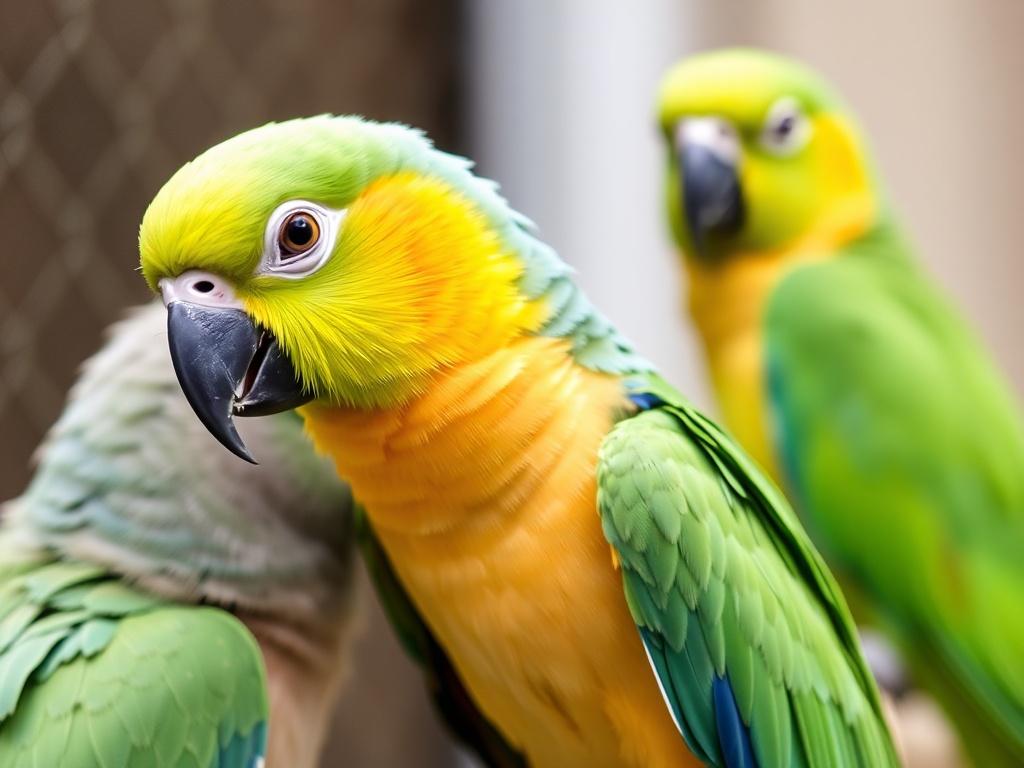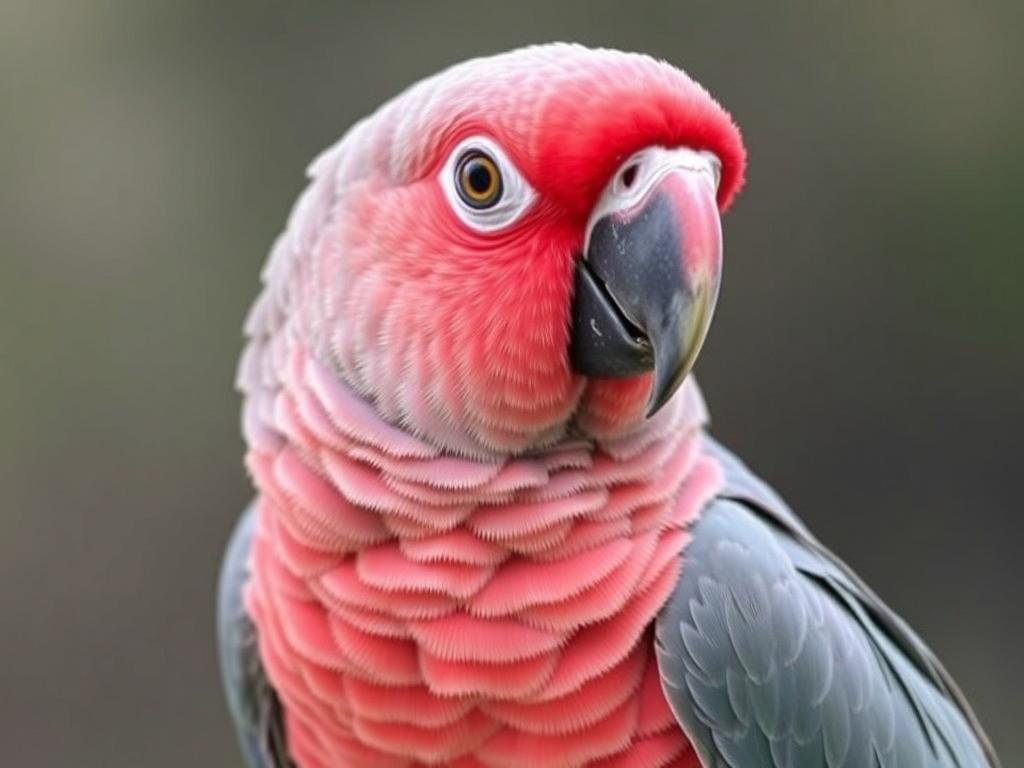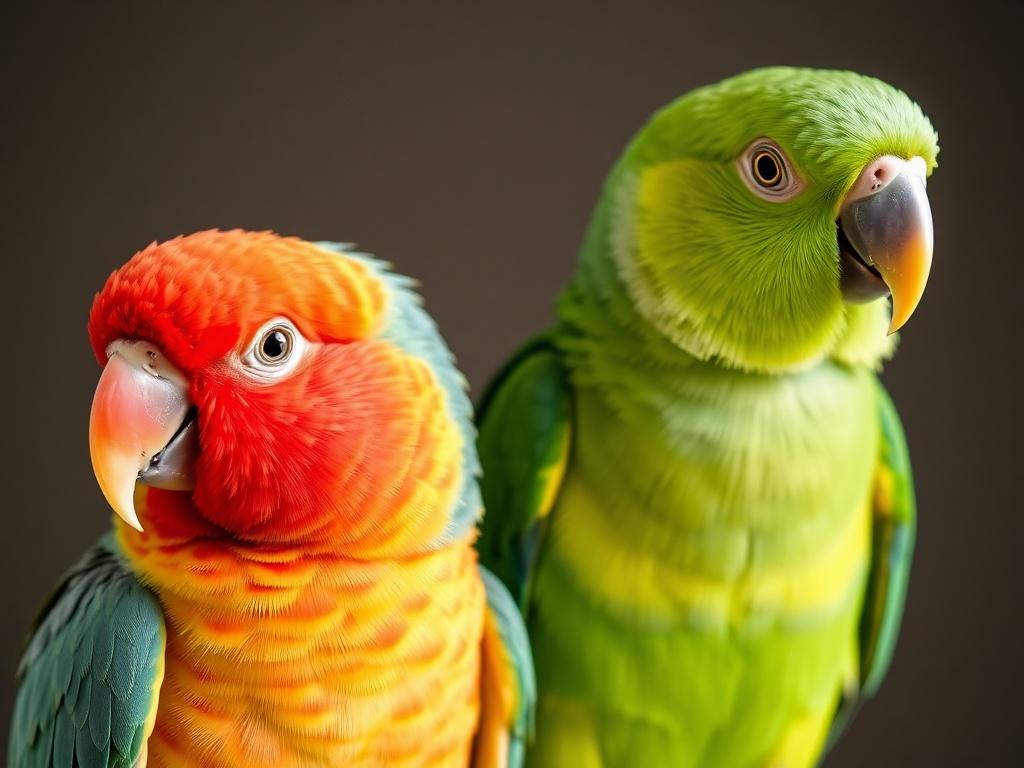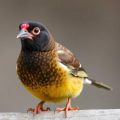Содержание
- How cancer develops in parrots: a simple overview
- Common types of tumors found in parrots
- 1. Lymphoma / lymphosarcoma
- 2. Squamous cell carcinoma (SCC)
- 3. Adenocarcinomas and carcinomas of internal organs
- 4. Hemangiosarcoma and vascular tumors
- 5. Fibrosarcoma and soft tissue sarcomas
- 6. Lipomas and benign fatty tumors
- 7. Osteogenic tumors and bone tumors
- 8. Testicular and ovarian tumors
- 9. Viral-associated tumors
- Signs and symptoms: what to watch for at home
- How veterinarians diagnose cancer in parrots
- Treatment options: what’s realistic for parrots?
- Prognosis: what to expect
- Risks, side effects, and how to manage them
- Monitoring and follow-up care
- Costs and practical considerations
- Questions to ask your avian veterinarian
- How to help your parrot at home
- Prevention and early detection: reducing risks where possible
- Research and future directions in avian oncology
- Case examples: putting it into perspective
- Useful resources and support
- Summary table: quick reference guide
- Emotional support for owners
- Practical tips for clinic visits and emergencies
- When to consider humane euthanasia
- Final thoughts before the conclusion
- Conclusion
SQLITE NOT INSTALLED
Parrots are bright, curious, and enduring companions, and when something is wrong with one of these charismatic birds, it pulls at the heartstrings. A diagnosis of cancer in a parrot can feel bewildering and frightening; many bird owners have never imagined their companion could face such a disease. This article is a friendly, practical guide to help you understand what cancer in parrots looks like, the common tumor types, how veterinarians diagnose and stage cancers in birds, and the realistic treatment and supportive care options available. We’ll walk through how to spot warning signs early, what to expect during diagnostic testing and therapy, and how you can help your feathered friend maintain the best possible quality of life.
I’ll be candid: avian oncology is a specialized, sometimes experimental area. Treatments that are routine in dogs and cats may be adapted for parrots or used more cautiously due to size, drug metabolism differences, and financial or logistical constraints. Still, many parrots respond well to treatment or can be managed comfortingly with palliative care. With information and a thoughtful partnership with an avian veterinarian, you’ll be equipped to make care choices for your bird.
How cancer develops in parrots: a simple overview
Cancer arises when cells start growing and dividing without normal control. In parrots, as in other animals, this can happen for several reasons: genetic mutations that accumulate with age, chronic inflammation from repeated injury or infection, immune system dysfunction, or viral triggers that affect cell growth. While parrots don’t get cancer at the same rates as some mammals, certain tumors are seen more commonly in particular species or age groups. Because parrots often mask illness until problems are advanced, small masses can go unnoticed until they affect eating, mobility, or breathing.
Veterinarians use words like benign (non-invasive tumors that usually don’t spread) and malignant (invasive tumors that may metastasize, or spread) to describe tumors. Both can be problematic in birds because of the small body size and tight internal anatomy—what seems small can quickly interfere with organ function.
Common types of tumors found in parrots
Parrots can develop a range of neoplasms. Here are the tumor types most commonly encountered in avian practice, with their typical locations and behavior:
1. Lymphoma / lymphosarcoma
Lymphoma is a cancer of lymphocytes, a type of immune cell. In parrots, lymphoma can be localized (affecting a single organ or site) or multicentric (involving many organs, such as liver, spleen, kidneys, and bone marrow). Clinical signs vary widely and may include weight loss, lethargy, swelling (if lymph nodes or organs are enlarged), abnormal bleeding, and changes on bloodwork. Lymphoma is one of the more commonly diagnosed malignant tumors in many bird species.
2. Squamous cell carcinoma (SCC)
Squamous cell carcinoma is a skin and mucosal tumor that often occurs on the beak, oral cavity, choana (throat opening), or skin—especially on featherless areas. It tends to be locally invasive, causing ulceration, bleeding, and difficulty eating or preening. SCCs can sometimes metastasize to local lymph nodes or internal organs.
3. Adenocarcinomas and carcinomas of internal organs
Glandular and epithelial tumors, such as hepatocellular carcinoma (liver), renal adenocarcinoma (kidney), or pancreatic tumors, are reported in parrots. Because internal tumors may not produce obvious external signs until late, they are often discovered during workups for nonspecific signs like weight loss or anemia.
4. Hemangiosarcoma and vascular tumors
Arising from the cells that line blood vessels, these tumors can occur on the skin or within internal organs. They are often aggressive and may bleed into body cavities, causing sudden deterioration.
5. Fibrosarcoma and soft tissue sarcomas
These are tumors of connective tissue and may appear as firm masses under the skin or within muscle. They can be locally aggressive and recur if not completely excised.
6. Lipomas and benign fatty tumors
While benign, lipomas can become problematic in birds due to space constraints. They typically appear as soft, movable masses under the skin. In psittacines (parrots), fat tumors are less common than in some mammals but do occur.
7. Osteogenic tumors and bone tumors
These may affect beak bones, digits, or limb bones. Beak tumors can be particularly concerning because they interfere with eating and preening.
8. Testicular and ovarian tumors
Reproductive tract neoplasms are seen in older parrots. These may present as abdominal enlargement, changes in behavior, or egg-laying abnormalities.
9. Viral-associated tumors
While classic tumor-causing viruses in poultry (for example, Marek’s disease in chickens) are different from those in parrots, viral infections that suppress immunity—like beak and feather disease virus (circovirus)—may indirectly elevate risk by compromising immune surveillance. The role of viruses in avian oncology is an active area of research.
Signs and symptoms: what to watch for at home
Parrots hide illness well, so subtle changes matter. Early detection improves options.
- New lumps or bumps under the skin or on the beak, face, or neck
- Weight loss despite a normal appetite, or conversely, difficulty eating
- Changes in droppings (color, consistency, frequency)
- Unexplained bleeding or non-healing wounds
- Labored breathing, wheezing, or coughing
- Decreased activity, fluffed appearance, or reluctance to perch
- Changes in voice or difficulty swallowing
- Abdominal enlargement or swelling
- Repeated infections or slow recovery from injury
If you notice any of these, call your avian veterinarian. Small problems can escalate quickly in birds.
How veterinarians diagnose cancer in parrots
Diagnosis combines history, physical exam, and targeted tests. A thorough approach helps determine whether a mass is inflammatory, infectious, benign, or malignant.
- Detailed history and physical exam: weight trends, behavior, diet, vaccination and exposure history, and palpation for masses.
- Fine-needle aspiration (cytology): a quick, minimally invasive way to sample cells from a mass. It can suggest whether a tumor is inflammatory, infectious, or neoplastic, but it might not always provide a definitive tumor type.
- Biopsy and histopathology: surgical removal of a tissue sample is the gold standard to diagnose tumor type and grade. A pathologist examines tissue architecture and cell appearance to classify the tumor and guide treatment.
- Bloodwork: complete blood count (CBC), biochemistry, and sometimes special tests to assess organ function, blood cell production, and to look for paraneoplastic effects.
- Radiographs (X-rays): to evaluate lungs, air sacs, bones, and the presence of masses in the coelomic (body) cavity.
- Ultrasound: useful for imaging internal organs such as the liver, kidneys, and reproductive tract, guiding biopsies, and assessing blood flow.
- Advanced imaging: CT or MRI can be invaluable for surgical planning, especially for tumors involving the skull, beak, or complex internal anatomy.
- Endoscopy: direct visualization and biopsy of lesions in the airways, cloaca, or body cavity.
- Immunohistochemistry and molecular testing: used when the tumor type isn’t clear or to look for viral involvement.
Timely, targeted diagnostics are the foundation of effective treatment planning.
Treatment options: what’s realistic for parrots?
Treatment depends on tumor type, location, the overall health of the bird, and owner goals and resources. In many cases, the primary options are surgery, chemotherapy, radiation therapy, or palliative/supportive care. Often treatments are combined.
Surgery: removing the problem
Surgical excision is the most commonly used treatment for accessible tumors. When a tumor is localized and can be removed completely with clean margins, surgery offers the best chance for a cure. For beak, skin, or soft-tissue masses, a skilled avian surgeon can often achieve good outcomes.
However, limitations exist:
- Small body size makes anesthesia and surgical margins more challenging.
- Tumors near vital structures (brain, central airways, major vessels) may be inoperable or carry high risk.
- Incomplete excision can lead to recurrence of locally aggressive tumors.
Pre-surgical planning often uses imaging (CT, X-ray, ultrasound) and biopsy information. Postoperative care requires careful monitoring of fluid balance, warmth, nutrition, and pain control.
Chemotherapy: medical oncology for birds
Chemotherapy uses drugs to kill rapidly dividing cells. Birds metabolize medications differently from mammals, and safety margins can be narrow; nonetheless, chemotherapy is increasingly used in avian medicine for conditions like lymphoma and some carcinomas. Commonly used drugs include carboplatin, cyclophosphamide, vincristine, doxorubicin, and lomustine, chosen and dosed with avian-specific protocols.
Important considerations:
- Side effects: birds can be sensitive to med-related toxicities (bone marrow suppression, gastrointestinal upset, liver or kidney effects). Careful monitoring with regular bloodwork is essential.
- Goals: chemotherapy may be curative, control local disease, or provide systemic disease control and palliation. In many cases for birds, the aim is to prolong good quality of life rather than promise a cure.
- Cost and logistics: repeated clinic visits for injections, blood monitoring, and potential hospital stays can be required.
An avian specialist or a veterinary oncologist experienced with birds is the best person to recommend chemo protocols and monitoring schedules.
Radiation therapy
Radiation can be effective for local tumor control, especially for tumors in the head (beak, oral cavity) or skin that are not amenable to complete resection. Fractionated radiation (several small doses) can shrink tumors or reduce pain and functional impairment.
Limitations include:
- Availability: radiation facilities with experience treating small birds are not widespread.
- Need for anesthesia or heavy sedation for each session.
- Potential tissue damage to adjacent structures, especially in small patients where normal tissues are close to the target.
When feasible, radiation in combination with surgery or chemotherapy can improve outcomes for select tumors.
Cryotherapy, electrosurgery, and local treatments
For superficial masses, cryotherapy (freezing), electrosurgery (cauterization), or topical therapies may be options for smaller lesions or to improve comfort. These are often palliative rather than curative for invasive cancers but can reduce bleeding, pain, and infection.
Targeted and experimental therapies
Targeted therapies—drugs that act on specific cellular pathways—are an area of expanding research in veterinary oncology. In parrots, these are rarely used outside research settings because of limited data and costs. Immunotherapy, which trains the immune system to attack tumor cells, is similarly experimental in birds.
Palliative and supportive care
When cure is not possible, compassionate palliative care focuses on comfort and quality of life. This includes pain control, anti-inflammatories, appetite stimulants, antibiotics for secondary infections, and environmental adjustments to reduce stress and exertion. Many birds thrive for months with appropriate palliative care.
Prognosis: what to expect
Prognosis varies widely depending on tumor type, stage at diagnosis, and treatment options. Some benign tumors may be cured with surgery, while systemic malignancies like advanced lymphoma or metastatic carcinomas have a more guarded prognosis. Key factors influencing prognosis include:
- Tumor type and grade (aggressiveness)
- Whether the tumor can be completely removed surgically
- Involvement of internal organs or metastasis
- Bird’s age and general health
- Owner commitment to monitoring and follow-up care
Open communication with your veterinarian about realistic outcomes and quality-of-life indicators will help guide treatment decisions.
Risks, side effects, and how to manage them
Any intervention carries potential complications. Understanding these helps you prepare and recognize issues early.
- Anesthesia risks: Birds are sensitive to temperature changes and anesthetic drugs. Preoperative stabilization, careful monitoring, and skilled anesthesia reduce risk.
- Surgical complications: bleeding, infection, wound breakdown, or poor healing, especially in malnourished or immunocompromised birds.
- Chemotherapy toxicity: bone marrow suppression (low white blood cell or platelet counts), vomiting or diarrhea, and organ toxicity. Frequent bloodwork helps detect problems early.
- Radiation-induced tissue damage: delayed effects on surrounding normal tissues can occur, necessitating long-term follow-up.
- Pain and stress: effective analgesia and a calm environment are essential during recovery.
Your veterinarian will outline specific monitoring steps, emergency signs, and supportive measures tailored to your bird and chosen treatments.
Monitoring and follow-up care

Active follow-up improves outcomes. Typical monitoring includes:
- Regular physical exams and feeling for new or recurrent masses
- Periodic bloodwork to monitor organ function and blood cell counts
- Repeat imaging (X-rays, ultrasound, or CT) to check for recurrence or spread
- Wound checks and assessment of behavior, appetite, and droppings at home
Keep a simple log (weight, appetite, droppings, activity) to share with your vet; it helps detect changes earlier than sporadic visits.
Costs and practical considerations
Cancer treatment in parrots can be resource-intensive. Surgical procedures, advanced imaging, chemotherapy drugs, and hospital stays add up. Radiation clinics may be far from home. When making decisions, weigh:
- Financial costs and the feasibility of long-term monitoring
- Time and travel required for repeated treatments
- Potential stress on your bird with frequent clinic visits
- Your goals: aggressive treatment to extend life, or palliative care to prioritize comfort
A frank conversation with your veterinarian about realistic prognosis, treatment burden, and alternatives will help you choose a path aligned with your values.
Questions to ask your avian veterinarian
Being prepared helps you get the most from consultations. Useful questions include:
- What type of tumor does my bird have, and how certain are you of that diagnosis?
- Do you recommend biopsy or additional testing before treatment?
- What are the treatment options, and what do you recommend for my bird specifically?
- What are the risks, side effects, and expected recovery time for each option?
- What monitoring will be required during and after treatment?
- How will you manage pain and quality of life?
- Are there palliative care options if we decide against aggressive therapy?
Clear expectations will help you and your vet work as a team.
How to help your parrot at home
Your day-to-day care can make a big difference in recovery and comfort.
- Create a quiet, warm, and stress-free recovery area. Avoid sudden noises and allow rest.
- Encourage a balanced diet with species-appropriate pellets, fresh vegetables, and proper calcium and vitamin support as advised by your vet.
- Monitor weights and droppings daily; a digital kitchen scale is an inexpensive monitoring tool.
- Administer medications exactly as prescribed and report any side effects promptly.
- Maintain grooming and beak care as recommended; some birds will need help with perching or bathing during recovery.
Small comforts—gentle handling, favorite perches, and familiar toys—help birds feel secure through difficult times.
Prevention and early detection: reducing risks where possible
While not all cancers are preventable, a few practical steps can lower risks and aid early detection:
- Regular wellness exams with an avian veterinarian, especially as birds age.
- Prompt evaluation of any new lumps, wounds, or behavioral changes.
- Maintain a balanced diet and avoid obesity—good nutrition supports immune health.
- Minimize exposure to known toxins (household chemicals, heavy metals, aerosols, cigarette smoke).
- Manage chronic infections or inflammatory conditions to reduce long-term tissue damage.
Early detection broadens treatment options and often improves outcomes.
Research and future directions in avian oncology
Avian oncology is growing. Advances include better chemotherapy protocols adapted for birds, refinement of radiation techniques for small patients, and improved imaging tools like high-resolution CT. Researchers are also exploring the role of viruses and genetic factors in avian tumors, which may eventually lead to preventive strategies or targeted therapies. While widespread, validated targeted drugs and immunotherapies are not yet standard for parrots, ongoing studies offer hope that future treatments will be safer and more effective.
Case examples: putting it into perspective
Here are three brief examples that show the variety of outcomes owners might encounter:
- Case A: A 10-year-old cockatiel with a small, solitary beak mass underwent CT-guided surgical excision. Histopathology showed squamous cell carcinoma with clean margins. The bird recovered uneventfully and returned to normal function, with periodic follow-up showing no recurrence after two years.
- Case B: A 12-year-old African grey presented with weight loss and lethargy. Ultrasound and biopsy revealed multicentric lymphoma. The owners pursued a chemotherapy protocol with close monitoring. The bird had partial remission, experienced months of good quality time, and maintained appetite and activity with periodic low-dose medications and supportive care.
- Case C: An elderly conure developed a large abdominal mass. Imaging suggested an advanced internal carcinoma. Given age and risks of anesthesia and surgery, the owners chose palliative care focusing on pain control, nutritional support, and home-based quality-of-life measures. The bird remained comfortable for several months before natural progression.
These varied stories underscore that individualized care—tailored to the bird’s condition and the owner’s goals—is essential.
Useful resources and support
When facing a suspected or confirmed cancer diagnosis in your parrot, it helps to have trusted resources:
- Your avian veterinarian or a specialist in exotic animal medicine
- Veterinary oncologists (some clinics offer consultations by phone or video)
- Local or online bird owner support groups for emotional support and practical tips (remember to verify medical advice with your vet)
- Educational materials from reputable sources such as veterinary teaching hospitals and avian medicine textbooks
Don’t hesitate to ask your vet for reading materials specific to your bird’s diagnosis and for referrals to specialists if needed.
Summary table: quick reference guide
| Tumor Type | Common Location | Typical Signs | Usual Diagnostics | Treatment Options | Prognosis |
|---|---|---|---|---|---|
| Lymphoma | Multicentric: liver, spleen, bone marrow, lymphoid tissues | Weight loss, lethargy, anemia, enlarged organs | Bloodwork, FNA/biopsy, imaging (X-ray, ultrasound), biopsy | Chemotherapy, supportive care | Variable; often guarded to fair with treatment |
| Squamous cell carcinoma | Beak, oral cavity, skin | Ulcerated masses, bleeding, difficulty eating | FNA/biopsy, imaging for local spread | Surgery, radiation, local therapies | Good if excised early; risk of local recurrence |
| Adenocarcinoma (internal) | Liver, kidney, gut | Non-specific signs: poor appetite, weight loss | Imaging, biopsy, blood tests | Surgery if localized; palliative care | Often guarded due to late detection |
| Hemangiosarcoma | Skin, liver, spleen | Bleeding, sudden collapse if internal bleed | Imaging, biopsy (with caution) | Surgery if accessible, palliative care | Often poor due to aggressive nature |
| Lipoma (benign) | Subcutaneous | Soft, movable mass | FNA, biopsy if uncertain | Surgical removal if causing problems | Generally good |
Emotional support for owners
A cancer diagnosis in a beloved parrot is emotionally draining. Reach out to friends, family, and avian community groups. Prepare for decisions about treatment intensity and end-of-life wishes in advance so you can act confidently and compassionately when the time comes. Veterinarians can also help with grief support resources and palliative care guidance.
Practical tips for clinic visits and emergencies
- Carry your bird in a secure, well-ventilated carrier with a familiar towel to reduce stress.
- Bring a recent weight and diet history, and note any medications or supplements.
- Ask about fasting or special prep before anesthesia—don’t withhold water unless instructed.
- Know your clinic’s emergency contact process for after-hours problems.
Preparing ahead helps visits run smoother and reduces stress for your bird.
When to consider humane euthanasia

Decisions about euthanasia are deeply personal and difficult. The guiding principle is whether the bird’s suffering can be relieved and whether a reasonable quality of life can be maintained. Signs that euthanasia may be the kindest option include uncontrollable pain, severe respiratory distress, inability to eat or drink despite attempts at support, or progressive decline despite reasonable treatment. Discuss quality-of-life indicators and realistic outcomes with your veterinarian—they can help guide this compassionate decision.
Final thoughts before the conclusion
Cancer in parrots is a complex and evolving field. While the diagnosis is serious, it is not always a death sentence. With early detection, thoughtful diagnostics, and individualized treatment plans, many parrots receive meaningful, quality time with their caregivers. Prioritizing comfort, being informed, and working closely with an avian veterinarian are the keys to navigating the journey.
Conclusion

Facing cancer in a parrot is one of the most challenging experiences an owner can have, but understanding the types of tumors, the diagnostic steps, and the range of treatment and palliative options empowers you to make informed decisions for your bird’s care. Early detection, partnership with an experienced avian veterinarian, and thoughtful consideration of your bird’s quality of life will guide the course of action—whether that means pursuing surgery, chemotherapy, radiation, or focusing on comfort and supportive care. Above all, compassionate, attentive care at home and clear communication with your veterinary team give your parrot the best chance for comfort and dignity, whatever path you choose.





